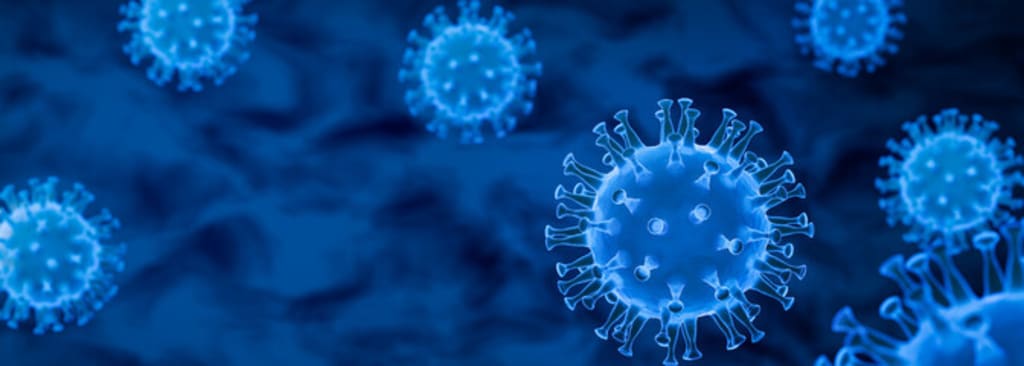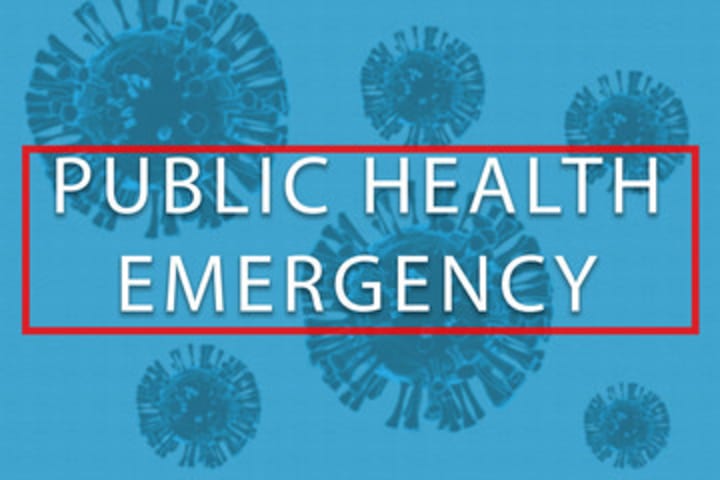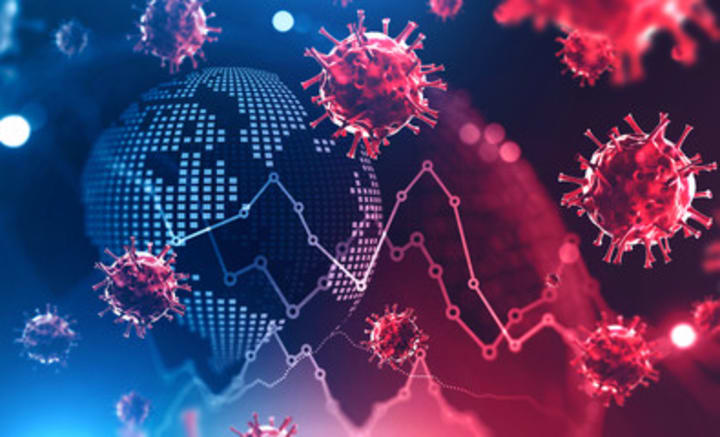Corona Virus or Influenza: Understanding the Similarities and Differences
Corona Virus and Influenza are two of the most well-known respiratory illnesses that affect large populations globally. Despite sharing many similarities, there are distinct differences between them in terms of their origins, transmission, symptoms, and treatment. This article aims to provide a comprehensive understanding of Corona Virus and Influenza, including their similarities and differences, diagnosis, treatment, vaccines, public health measures, global impact, and lessons learned that can help us better prepare for future outbreaks.

Corona Virus and Influenza are two of the most well-known respiratory illnesses that affect large populations globally. Despite sharing many similarities, there are distinct differences between them in terms of their origins, transmission, symptoms, and treatment. In recent years, the world has experienced the devastating effects of the COVID-19 pandemic, caused by the Corona Virus, which has highlighted the need for better understanding of these viruses. This article aims to provide a comprehensive understanding of Corona Virus and Influenza, including their similarities and differences, diagnosis, treatment, vaccines, public health measures, global impact, and lessons learned that can help us better prepare for future outbreaks.
1. Introduction: Corona Virus and Influenza

What are Corona Virus and Influenza?
Corona Virus and Influenza, or flu, are both respiratory illnesses caused by viruses. While they share some similarities, they are caused by different viruses and have distinct characteristics that set them apart. With the recent outbreak of the novel coronavirus known as COVID-19, many people are finding themselves confused about the differences between these illnesses. In this article, we will explore the similarities and differences between Corona Virus and Influenza, including how they spread, their symptoms, and how they are diagnosed and treated.
2. Transmission and Symptoms: How They Spread and Manifest

How do Corona Virus and Influenza Spread?
What are the Symptoms of Corona Virus and Influenza?
Corona Virus and Influenza both spread through respiratory droplets when an infected person sneezes, coughs, or talks. They can also be spread by touching a surface contaminated with the virus and then touching one's mouth, nose, or eyes.
The symptoms of Corona Virus and Influenza are similar and include fever, cough, fatigue, and body aches. However, Corona Virus can also cause shortness of breath and severe respiratory illness, while Influenza can cause nausea, vomiting, and diarrhea. It is important to note that not everyone with either illness will experience all of these symptoms and some people may show no symptoms at all.
3. Diagnosis: Testing and Identifying the Viruses

What are the Different Testing Methods for Corona Virus and Influenza?
How are Corona Virus and Influenza Diagnosed?
Corona Virus and Influenza can both be diagnosed through laboratory testing, with a nasal or throat swab. However, the testing methods for each virus are different. Corona Virus is typically detected using a molecular test, which looks for the genetic material of the virus. Influenza is typically detected using a rapid antigen test, which detects proteins on the surface of the virus.
It is important to note that testing for Corona Virus may not be widely available, and healthcare providers may only test individuals who meet certain criteria, such as recent travel to an affected area or contact with someone who has tested positive for the virus.
4. Treatment: Available Options for Managing Symptoms

What are the Treatment Options for Corona Virus and Influenza?
How can Symptoms be Managed?
Currently, there is no specific treatment or cure for Corona Virus or Influenza. Treatment for both illnesses focuses on managing symptoms, such as fever and congestion. In severe cases, hospitalization may be necessary, particularly with Corona Virus.
Prevention is key in reducing the spread of both Corona Virus and Influenza. Good hygiene practices, such as frequent hand washing and covering the mouth and nose when coughing or sneezing, can help prevent the spread of both viruses. Additionally, getting vaccinated against Influenza each year can help reduce the likelihood of getting infected with the flu. While there is currently no vaccine for Corona Virus, scientists are working to develop one.
5. Vaccines: Current Status and Future Developments

What Vaccines are Currently Available for Corona Virus and Influenza?
For the influenza virus, there are several vaccines available, each designed to protect against various strains of the virus. These vaccines are typically updated annually to keep up with new strains as they emerge. The current flu vaccine is about 40-60% effective in preventing illness.
For the coronavirus, there are currently three vaccines available in the United States: Pfizer-BioNTech, Moderna, and Johnson & Johnson. These vaccines have been shown to be highly effective at preventing COVID-19 and its severe symptoms.
What are the Developments in Vaccines for Corona Virus and Influenza?
Researchers are currently working on developing new vaccines for both coronavirus and influenza. For coronavirus, research is focused on developing booster shots to increase immunity levels and protect against new variants of the virus.
For influenza, researchers are working on developing a universal vaccine that can protect against all strains of the virus. This would eliminate the need for annual vaccine updates.
6. Public Health Measures: Mitigating the Spread of the Viruses

What Public Health Measures have been Implemented to Control Corona Virus and Influenza?
Public health measures to control the spread of both coronavirus and influenza include frequent hand washing, wearing masks, social distancing, avoiding large gatherings, and self-quarantine/isolation when sick.
For coronavirus, there have also been widespread lockdowns and travel restrictions implemented to help slow the spread of the virus.
What is the Importance of Public Health Measures for Controlling the Spread of the Viruses?
Public health measures are critical for controlling the spread of these viruses. They can help to reduce the number of cases, hospitalizations, and deaths. By following these measures, we can help protect ourselves and those around us, especially those who are at higher risk for severe illness.
7. Global Impact: Comparing the Social and Economic Consequences

What is the Global Impact of Corona Virus and Influenza?
Both coronavirus and influenza have had a significant impact on the global population, with millions of cases and deaths worldwide. The pandemic has also had far-reaching social and economic consequences, including job loss, business closures, and increased mental health issues.
How do the Social and Economic Consequences Compare?
The social and economic consequences of coronavirus have been particularly severe, with prolonged lockdowns and widespread business closures. The economic recovery is expected to take years. However, the impact of the flu pandemic tends to be more limited, with a quicker economic recovery.
8. Conclusion: Lessons Learned and Future Preparedness

What Lessons have been Learned from Corona Virus and Influenza?
The COVID-19 pandemic has highlighted the importance of early detection, quick response, and cooperation between nations. It has also emphasized the critical role of public health measures in controlling the spread of infectious diseases.
The flu pandemic has shown the importance of ongoing research and development of vaccines to protect against emerging strains of the virus.
How can we be Better Prepared for Future Outbreaks?
To be better prepared for future outbreaks, we need to invest in research, vaccine development, and public health infrastructure. We also need to improve global cooperation and coordination to ensure a prompt response to emerging infectious diseases. The pandemic has taught us that we are all interconnected, and our public health response must reflect this reality.In conclusion, while Corona Virus and Influenza share similarities, it's important to recognize their differences and understand how to prevent and treat them.
By learning from past outbreaks and ongoing research, we can develop better vaccines and treatments, implement effective public health measures, and be better prepared for future outbreaks. With continued efforts and collaboration, we can work towards a world where respiratory illnesses like Corona Virus and Influenza are better controlled and their impact reduced.
About the Creator
Krishna raj
"If your dreams don't scare you, they're too SMALL"
Enjoyed the story? Support the Creator.
Subscribe for free to receive all their stories in your feed. You could also pledge your support or give them a one-off tip, letting them know you appreciate their work.






Comments
There are no comments for this story
Be the first to respond and start the conversation.